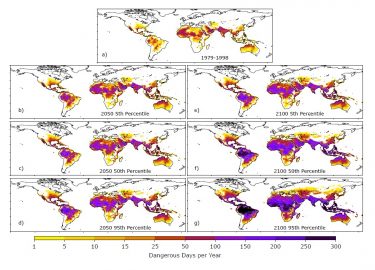
Record-breaking heat waves have occurred recently from Delhi to the Pacific Northwest, and the number of these deadly events is expected to increase. New research from the University of Washington and Harvard University gives a range of heat impacts worldwide by the end of this century, depending on future emissions of greenhouse gases.
The study was published Aug. 25 in the open-access journal Communications Earth & Environment.
“The record-breaking heat events of recent summers will become much more common in places like North America and Europe,” said lead author Lucas Vargas Zeppetello, who did the research as a doctoral student at the UW and is now a postdoctoral researcher at Harvard. “For many places close to the equator, by 2100 more than half the year will be a challenge to work outside, even if we begin to curb emissions.”
“Our study shows a broad range of possible scenarios for 2100,” he added. “This shows that the emissions choices we make now still matter for creating a habitable future.”
“The number of days with dangerous levels of heat in the mid-latitudes — including the southeastern and central U.S. — will more than double by 2050,” said co-author David Battisti, a professor of atmospheric sciences at the UW. “Even for the very low-end estimates of carbon emissions and climate response, by 2100 much of the tropics will experience ‘dangerous’ levels of heat stress for nearly half the year.”
Read more at UW News »
